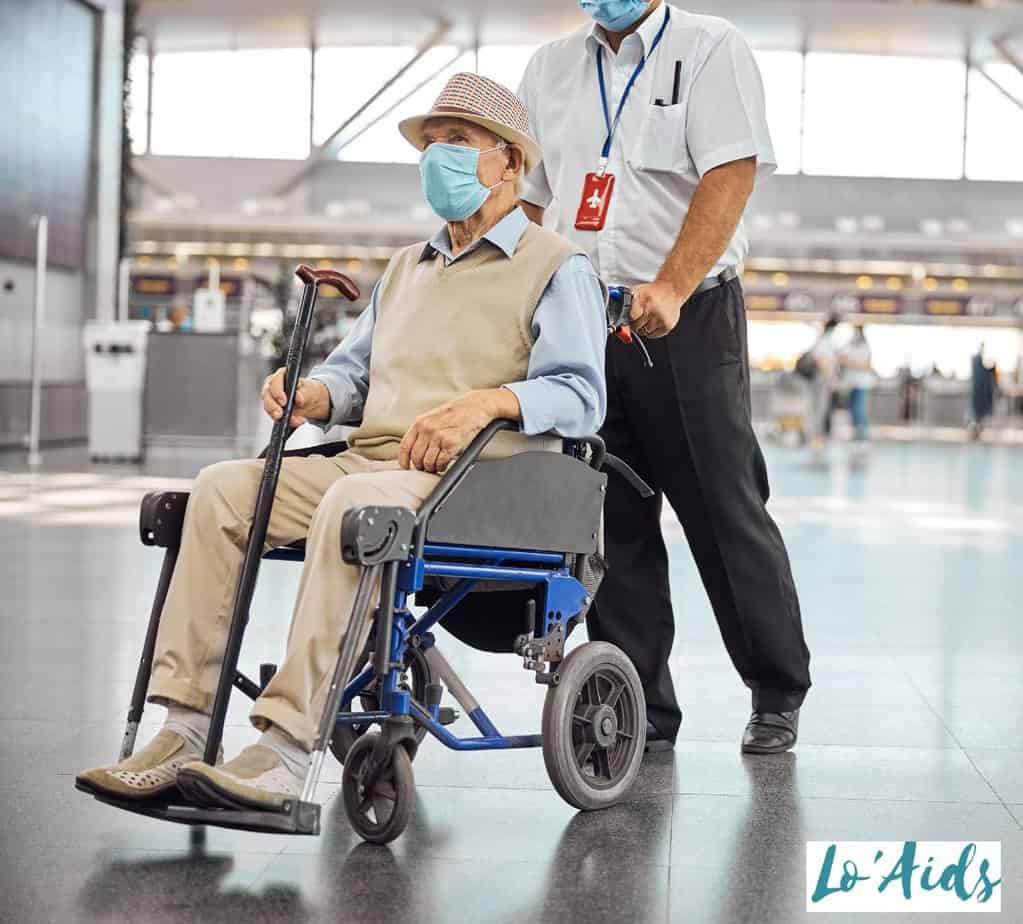Hunting for chair exercises for seniors with lower back pain? You’re not alone.
Armed with my fitness knowledge and motivated by seniors’ struggles, I’ve turned to studies – such as Katie R. Robinson’s profound Chair Based Exercise (CBE) – to enrich my knowledge and help my back pain [1].
In this article, you’ll learn everything I’ve discovered about alleviating this terrible mountain called “lower back pain,” – Trust me, it gets exciting!
Keep reading to say goodbye to back pain in just 7 exercises!
Table of Contents
Key Takeaways
- Chair-based exercises can effectively reduce lower back pain, especially for seniors.
- Regular practice of these exercises can improve flexibility, strength, and overall spinal health.
- These exercises are safe, easy to follow, and can be done in the comfort of your home.
7 Chair-Based Exercises to Alleviate Lower Back Pain for Seniors
For seniors, chair exercises are a game-changer. They offer some of the best seated exercises for seniors that target the muscles around the lower back.
Additionally, lower back strengthening exercises for seniors can be incorporated while sitting to increase strength and flexibility. Sitting reduces the risk of falls or strains, making it a safe option.
With consistent practice, these exercises can significantly diminish bacxkpain and enhance overall back health.
Here are 7 to master – starting with the simple chest stretch…
1. Neck and Chest Stretch: Realigning Posture
Why it’s essential: The modern world has us constantly looking down at screens, books, and various tasks. Over time, this habit can lead to a forward-leaning posture, causing neck and upper back discomfort.
How to do it:
- Sit upright in a sturdy chair, feet flat on the ground.
- Interlace your fingers and place them at the base of your skull.
- Gently lean your head back into your hands, directing your gaze upwards.
- Deeply inhale. As you exhale, tilt your left elbow towards the floor and your right elbow towards the ceiling. This movement should be subtle and pain-free.
- Return to the center and repeat on the opposite side.
Lunge into these steps for a PREMIUM stretching routine:
Now that we’ve addressed the forward-leaning posture, let’s focus on the upper back with a stretch that counteracts the hunch…
2. Seated Gentle Backbend: Counteracting the Hunch
Why it’s essential: A forward hunch is a common postural issue among seniors. This stretch aims to counteract that by opening up the chest and upper back.
How to do it:
- Sit with your spine straight and feet grounded.
- Place your hands on your lower back, fingers pointing downwards.
- Inhale deeply, and as you exhale, gently arch your upper back, lifting your chin slightly.
- Hold for a few breaths and return to the starting position.
This one is – indeed – one of my favorite stretches!
Feeling that openness in the chest? Let’s further enhance it by opening up the chest and shoulders even more.
3. Reach Back: Opening the Chest
Why it’s essential: Hunching forward can tighten the chest muscles. This stretch helps open up the chest and shoulders, promoting better posture.
How to do it:
- Sit tall, feet firmly on the ground.
- Reach both arms behind you, either interlacing your fingers or holding onto opposite elbows.
- Lift your chest and roll your shoulders back, feeling a stretch across your chest.
- Hold for several breaths before releasing.
Here’s another way to do it:
While the above stretches are foundational, let’s elevate your routine with two more advanced stretches.
4. Seated Cat-Cow: Mobilizing the Lower Back
Why it’s essential: The cat-cow stretch is a dynamic movement that promotes flexibility in the spine, which is particularly beneficial for the lower back.
How to do it:
- Sit with your feet flat and hands on your knees.
- Inhale, arching your back and looking up (this is the ‘cow’ position).
- Exhale, rounding your spine and tucking your chin (this is the ‘cat’ position).
- Flow between these positions, syncing your movement with your breath.
Now for a neat video:
With our chest feeling more open, it’s time to bring dynamic movement into our routine.
5. Gentle Twist: Revitalizing the Spine
Why it’s essential: Twisting actions can rejuvenate the spine, improve digestion, and enhance overall spinal health.
How to do it:
- Sit upright, feet flat on the floor.
- Inhale, lengthening your spine.
- Exhale, gently turning to your right and placing your left hand on your right knee.
- Hold for a few breaths, feeling the twist from the base of your spine to the top of your head.
- Return to the center and repeat on the opposite side.
Here’s a video of this stretch:
With our spine feeling revitalized, let’s target the sides of our body to ensure overall flexibility…
6. Lateral Side Stretch: Enhancing Flexibility
Why it’s essential: The lateral side stretch is excellent for targeting the oblique muscles and enhancing flexibility along the sides of the body.
This stretch can help alleviate tightness that results from prolonged sitting or standing.
How to do it:
- Sit upright in a sturdy chair with your feet flat on the ground.
- Extend your arms overhead, interlacing your fingers.
- Inhale deeply, and as you exhale, gently lean to the right, feeling a stretch along the left side of your body.
- Hold for a few breaths, then return to the center.
- Repeat on the left side.
Check out this video for a brief demonstration:
Having stretched the sides, let’s focus on the entire back, from the neck down to the lower back.
7. Seated Forward Fold: Relaxing the Back
Why it’s essential: This stretch targets the entire back, from the neck to the lower back. It’s a great way to release tension and promote relaxation.
How to do it:
- Sit on the edge of a sturdy chair, feet flat on the ground.
- Inhale, lengthening your spine.
- As you exhale, hinge forward from your hips, allowing your upper body to fold over your legs.
- Let your arms hang down or place them on the ground if reachable.
- Feel the stretch along your spine and hold for several breaths.
- Slowly lift your torso back up to the seated position.
Here’s a visual recap of this powerful stretch:
With these seven stretches, seniors have a comprehensive toolkit to combat back pain and maintain spinal health. Also try using a cane to help support your lower back.
If you have a back brace – such as the STOT SPORTS back brace – it can help you tremendously reduce back pain and keep your spine erect. See our article on Back Braces.
In fact, regularly practising these stretches can improve flexibility, reduce tension, and enhance the sense of well-being.
As usual, listening to your body and consulting with a healthcare professional before starting any new exercise routine is essential.
Eager to continue on this journey of senior wellness? Dive deeper into the world of what experts say!
What Experts Say
A study on 64 office employees, primarily call center workers, shows the relationship between sedentary behavior, sitting habits, and low back pain [2].
The research specifically uses textile pressure mats to focus on sitting behavior over 400 hours.
The findings are intriguing: 75% of participants reported chronic or acute back pain.
More evidently, those with chronic low back pain exhibited a potential trend towards more static sitting behavior than those without pain.
This suggests prolonged static sitting might be linked to chronic back pain, stressing the importance of regular movement and stretching for seniors and office workers.
In a study published in Scientifica, researchers Ishak, Zahari, and Justine explored the effectiveness of strengthening exercises for elderly individuals with lower back pain [3].
Their systematic review found that strengthening exercises can indeed be beneficial in reducing pain intensity disability and enhancing functional performance for the elderly.
This study further supports the notion that targeted exercises can be pivotal for low back pain patients.
Let’s delve deeper into some common queries & learn more tips…
FAQs
1. How often should seniors perform these exercises?
Ideally, seniors should engage in these exercises 3-5 times weekly for consistent benefits.
2. Are these exercises safe for all seniors?
While generally safe, it’s always best to consult a healthcare professional before starting any new exercise regimen.
3. Can these exercises be modified for varying fitness levels?
Absolutely! These exercises can be adjusted to suit individual needs and comfort levels.
Conclusion
Discovering chair exercises for seniors to alleviate lower back pain is a game-changer…
These tips offer a practical solution for those seeking relief without the need for intense workouts.
As people age, it’s crucial to find methods that cater to our changing bodies, and these exercises do just that.
Not only do they target the lower back, but they also promote overall health and mobility.
Embracing such routines can pave the way for a pain-free, active lifestyle in our golden years.
Resources
1. Robinson KR, Masud T, Hawley-Hague H. Instructors’ Perceptions of Mostly Seated Exercise Classes: Exploring the Concept of Chair Based Exercise. BioMed Research International. 2016;2016:1–8.
2. Bontrup C, Taylor WR, Fliesser M, Visscher R, Green T, Wippert P-M, et al. Low back pain and its relationship with sitting behaviour among sedentary office workers. Applied Ergonomics [Internet]. 2019;81:102894. Available from: https://www.sciencedirect.com/science/article/pii/S0003687019301279
3. Ishak NA, Zahari Z, Justine M. Effectiveness of Strengthening Exercises for the Elderly with Low Back Pain to Improve Symptoms and Functions: A Systematic Review. Scientifica [Internet]. 2016;2016:3230427. Available from: https://www.ncbi.nlm.nih.gov/pubmed/27293970






I will have to show this to my husband. He does have lower back pain.
I will have to show this to my sister, from time to time, she has lower back pain. And I know that these exercises help her.
Thanks for this! I am saving this for my father. He has lower back pain and can’t do traditional exercises.
This sounds nice for those with lower back pain. I know a few who have this, so I’ll have to share with them.
I had a fusion done at L5-S1 and my back is constantly hurting. I’ll have to try these gentle chair exercises. I do currently walk a bunch.